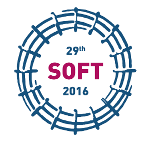Speaker
Yeong-Kook Oh
(KSTAR Research Center)
Description
Extending high performance plasma discharge into long pulse steady-state operation is one of the urgent issues to be solved in preparing the ITER and fusion reactor. The KSTAR device is one of the best engineered superconducting tokamak devices which is good for exploring the science and technologies for the high performance steady-state operation due to lots of its unique features such as extremely well defined for 3D field research with low-level of intrinsic error field and versatile in-vessel control coil, and advanced image diagnostics.
In the recent experiment in the KSTAR, the H-mode plasma discharge has been extended in pulse length up to 55s at 0.5 MA in plasma current and 2.9 T in toroidal field, which was the longest H-mode discharge in tokamaks so far. The fully non-inductive operation discharge were attempted to explore the steady-state operation mode. The first fully inductive operation was achieved at the reduced plasma current of 0.4 MA and the plasma performance was relatively high (bN ~ 2.1 and bP ~ 3.0). In the upcoming KSTAR 2016 campaign, we expect more improved plasma discharge up to 1 MA, and stabilized fully non-inductive scenario will be revisited.
In this paper, the recent progress in high performance long pulse discharge will be introduced as well as the exploring the the sciectific and engineering mechanism.
Co-authors
Hyeon K. Park
(KSTAR Research Center, National Fusion Research Institute, Daejeon, South Korea)
Hyeon-Sik Ahn
(KSTAR Research Center, National Fusion Research Institute, Daejeon, South Korea)
Jaesic Hong
(KSTAR Research Center, National Fusion Research Institute, Daejeon, South Korea)
Jong-Dae Kong
(KSTAR Research Center, National Fusion Research Institute, Daejeon, South Korea)
Jong-Gu Kwak
(KSTAR Research Center, National Fusion Research Institute, Daejeon, South Korea)
Kaprai Park
(KSTAR Research Center, National Fusion Research Institute, Daejeon, South Korea)
Sang-Tae Kim
(KSTAR Research Center, National Fusion Research Institute, Daejeon, South Korea)
Siwoo Yoon
(KSTAR Research Center, National Fusion Research Institute, Daejeon, South Korea)
Sonjong Wang
(KSTAR Research Center, National Fusion Research Institute, Daejeon, South Korea)
Suk-Ho Hong
(KSTAR Research Center, National Fusion Research Institute, Daejeon, South Korea)
Yaung-Soo Kim
(KSTAR Research Center, National Fusion Research Institute, Daejeon, South Korea)
Yeong-Kook Oh
(KSTAR Research Center, National Fusion Research Institute, Daejeon, South Korea)
Yong Chu
(KSTAR Research Center, National Fusion Research Institute, Daejeon, South Korea)
Yong Un Nam
(KSTAR Research Center, National Fusion Research Institute, Daejeon, South Korea)
Yong-kyoon In
(KSTAR Research Center, National Fusion Research Institute, Daejeon, South Korea)
YoungMu Jeon
(KSTAR Research Center, National Fusion Research Institute, Daejeon, South Korea)

